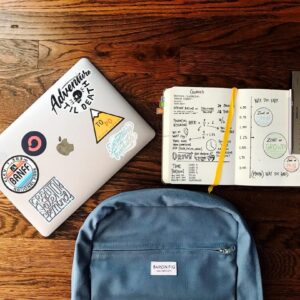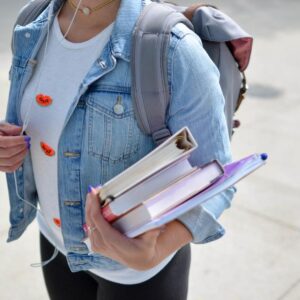
Learning can be hard for all students, but students with disabilities must deal with additional struggles. Children with disabilities account for 15% of public school students. Whether it's dyslexia, autism, or physical limitations, these learning challenges create extra friction and obstacles for students.
Many laws exist to protect students with disabilities and guarantee their right to an appropriate education. However, parents often have to advocate for their children to ensure they get the special education programs they deserve to help them fulfill their potential.
5 Unique Challenges Faced by Students With Disabilities
Disabled children need special accommodations in their everyday lives to access facilities and materials that people without disabilities take for granted. Here are five challenges that individuals with disabilities often deal with.
1. Physical Barriers
Physical barriers can have serious implications for people with disabilities, affecting their education, social integration, and mental health. Some common physical barriers include:
- Inaccessible infrastructure, such as narrow doorways that can't accommodate wheelchairs, staircases without accompanying ramps or elevators, inaccessible restrooms, or high thresholds
- Poorly designed classrooms that make it hard for a student with a disability to participate fully, such as tightly packed desks or boards that can't be seen from a wheelchair
- Lack of assistive devices or technologies such as braille textbooks, a screen reader, a sign language interpreter, or a captioning service
- Noninclusive physical education, such as a swimming pool without a lift or ramp
2. Social Isolation
Students with disabilities experience social isolation at greater rates than those without disabilities. Social isolation can arise from a combination of physical barriers, communication difficulties, and social attitudes and include:
- Communication challenges: Students with speech or hearing impairments might find it more challenging to communicate with peers. Children with autism or other neurodivergent conditions can struggle with social cues, making interactions with their peers more difficult.
- Social stigma and misunderstanding: Often, nondisabled individuals might not know how to interact with someone who has a developmental disability, or they might have prejudices or misconceptions.
- Limited representation: A lack of representation in media and literature can lead to feelings of not being understood or recognized, further isolating disabled students. Only 2.4% of speaking characters in movies were depicted with disabilities.
Inclusion efforts in schools can help mitigate social isolation. When teaching students with physical disabilities or intellectual disabilities, schools should include them in mainstream classes as much as possible. They should also foster a school culture that encourages diversity and inclusion, educate students and staff about working with students with disabilities, and provide appropriate support services for students.
3. Lack of Accommodations for Disabled Students
Many disabled students don't get the accommodations they need to succeed, even with an IEP or 504 plan. Accommodations allow students with disabilities to show what they know without giving them an unfair advantage. The specific accommodations will vary between students but can include how information is presented, how the student can respond, the timing and scheduling of tests, and the learning environment.
You may need to advocate for your child to receive the support and accommodations they need. You can:
- Review disability laws, such as the Individuals with Disabilities Education Act (IDEA).
- Attend parent-teacher meetings, special education planning meetings, and school board meetings to learn about the school's policies and the people who implement them.
- Communicate regularly with teachers and school administrators about your concerns and your child's progress and needs.
- Keep records of all meetings, phone conversations, assessments, medical records, and report cards.
- Consult with outside experts, including educational consultants, psychologists, lawyers specializing in educational law, or advocacy organizations.
4. Behavioral and Emotional Challenges
Behavioral and emotional challenges often accompany physical, intellectual, or developmental disabilities. Understanding how to help children handle their emotions can significantly affect their quality of life. Here are some tips on how to help students with learning disabilities in the classroom and at home:
- Teach coping strategies for managing emotions and behaviors, such as deep breathing exercises, progressive muscle relaxation, or other mindfulness techniques.
- Provide a structured environment to reduce anxiety and acting out behaviors.
- Model healthy behaviors to give your child a positive example to follow.
- Collaborate with your child's school to ensure they have support for emotional or behavioral challenges, such as counseling services or social skills training.
- Reinforce positive behavior and efforts by praising your child or offering small rewards.
5. Level of Patience From Special Education Teachers
Teaching students with different learning needs often requires extra patience and understanding, as these students may need more time to grasp concepts, complete tasks, or express their ideas. However, teachers may not always be well-equipped for this, so you may have to get involved. When you're having issues with your child's teacher, you should:
- Communicate openly: Open and respectful communication is the first step in addressing concerns. You can request a meeting with the teacher to discuss your concerns and seek understanding about the teacher's perspective.
- Collaborate on strategies: Share insights into your child's unique needs and strengths, and collaborate with the teacher on strategies to make learning more effective. Teachers might not always be aware that certain approaches are not working or are causing frustration, so this feedback can help.
- Involve school administrators: If your concerns aren't being addressed, the next step is to involve school administrators, such as a principal or special education director, to ensure your child's needs are met.
- Seek outside support: If problems persist, you may need to seek help from outside the school. In extreme cases, you might need to file a complaint with the local education authority or a relevant regulatory body.
- Provide support at home: You can reinforce concepts that the child is struggling with at school by hiring a tutor, helping your child develop coping strategies, or providing a safe space to express their frustrations and fears after school.
How To Help Your Child Succeed as a Student With a Disability
A disability can make it harder for your child to do well in school, but we believe every child has potential. At Alexander Tutoring, we can help your child by developing a customized plan for them to succeed inside and outside the classroom. We'll work one-on-one with your child to overcome student challenges so they can excel. Reach out today to learn more.




